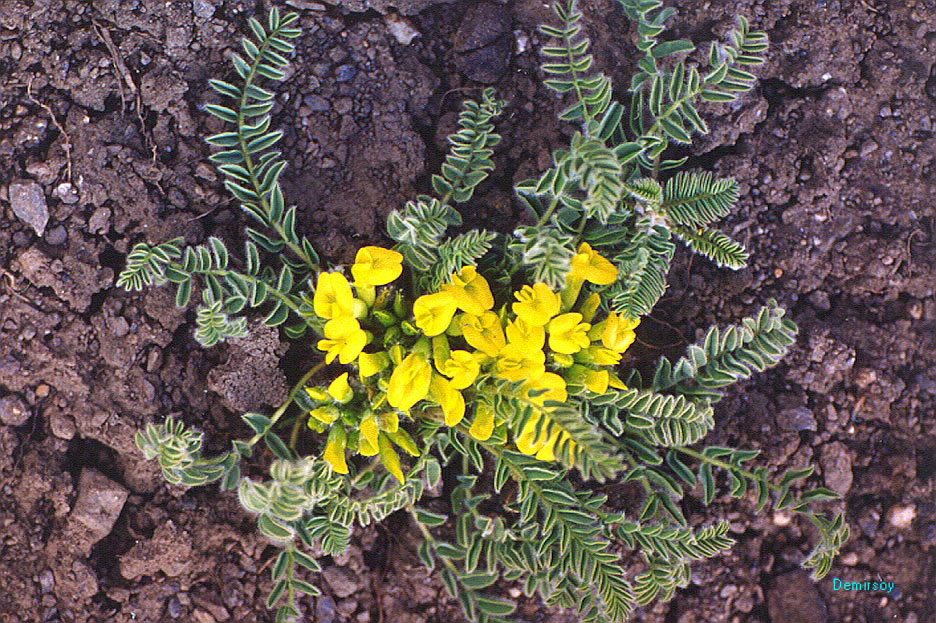Astragalus basianicus: Red Data Book of Armenia

EN B 1 ab(i,ii,iii) + 2 ab(i,ii,iii)
Category. Endangered species. Only one sub–population is known. The extent of occurrence and the area of occupancy are less than 500 km2. It was not included in the first edition of the Red Data Book of Armenia. It is not included in the Annexes of CITES and that of the Bern Convention.
Description. Tomentose, thorny, branched tragacanth undershrub, 10– 20 cm. Leaf rachis thin, 8–12 mm long, ending in small prickle; leaflets 5–9–pairede, elliptical, 9–27 x 4–9 mm, with domed veins. Inflorescence compressed–globose, calyx villose, 8–10 mm long; teeth tips turned inside of calyx. Corolla pink; flag 14–17 mm long, auriculate. Legumes ovoid–oblong, 4–8 mm long, pubescent.
Distribution. In Armenia it occurs in Gegham (surroundings of Geghard village, in the ruins of the church Prkich) and Yerevan (vicinity of Voghchaberd and Garni villages) floristic regions. EOO is 50 km2, AOO is 20 km2, the number of locations is 1. Besides Armenia the general area of distribution includes North–East Anatolia, North Iraq and Iran.
Ecological, biological and phytocoenological peculiarities. Grows in middle mountain belt, at the altitudes of 1300–1900 meters above sea level, on dry stony slopes, among steppe shrubs. Flowering from April to June, fruiting from May to June, rarely in September.
Limiting factors. Restricted extent of occurrence and area of occupancy, loss/degradation of habitats caused by land development and intensive agricultural activity.
Conservation actions. Part of the population grows in "Khosrov Forest" State Reserve. Necessary: monitoring of the population state.
Suggestions
 The Ministry of Environment sent a letter international partners to draw their attention to the real danger of environmental disasters as a result of Azerbaijan's large-scale aggression towards the territory of Armenia
The Ministry of Environment sent a letter international partners to draw their attention to the real danger of environmental disasters as a result of Azerbaijan's large-scale aggression towards the territory of Armenia
 Vicia pisiformis: Red Data Book of Armenia
Vicia pisiformis: Red Data Book of Armenia
 Vavilovia formosa: Red Data Book of Armenia
Vavilovia formosa: Red Data Book of Armenia
 Trigonella capitata: Red Data Book of Armenia
Trigonella capitata: Red Data Book of Armenia
 Trigonella astroides: Red Data Book of Armenia
Trigonella astroides: Red Data Book of Armenia












